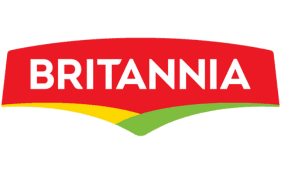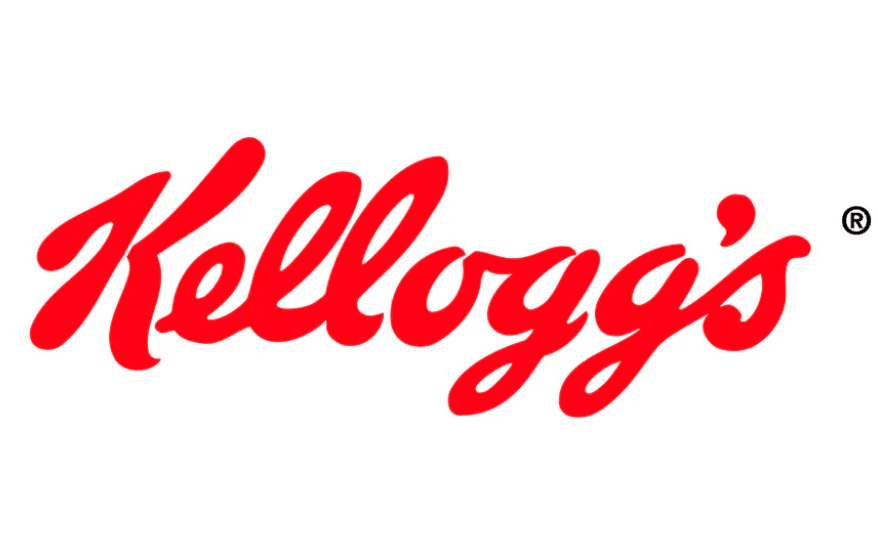
Smart Consumer App
Enhances customer trust with accurate, detailed, and real-time product information.

GS1 brings trusted medical product information to smartphones through collaboration with Google
Launch of smartphone camera scanning of GS1 DataMatrix barcodes marks a global breakthrough for patient safety.
The Global Language of Business
Facilitating seamless collaboration, standardisation, interoperability, and transparency across industries globally.

GS1 Vision 2030
Our new global strategy to help businesses grow and lead with trusted data in a digital-first world.

The Next-generation of Barcodes
Discover the power of 2D barcodes for an advanced, transparent, and consumer-centric global supply chain.


Smart Consumer App
Enhances customer trust with accurate, detailed, and real-time product information.

GS1 brings trusted medical product information to smartphones through collaboration with Google
Launch of smartphone camera scanning of GS1 DataMatrix barcodes marks a global breakthrough for patient safety.
The Global Language of Business
Facilitating seamless collaboration, standardisation, interoperability, and transparency across industries globally.

GS1 Vision 2030
Our new global strategy to help businesses grow and lead with trusted data in a digital-first world.

The Next-generation of Barcodes
Discover the power of 2D barcodes for an advanced, transparent, and consumer-centric global supply chain.


Smart Consumer App
Enhances customer trust with accurate, detailed, and real-time product information.
About GS1 India
GS1 India is a supply chain standards organisation set up by the Ministry of Commerce and Industry along with CII, FICCI, ASSOCHAM, BIS, APEDA, IMC, FIEO, IIP, and Spices Board India. It helps businesses adopt best practices to improve supply chain visibility, achieve operational efficiency, and enhance customer/patient trust.
GS1 India is the only authorised body in India to provide barcodes starting with ‘890’. Major sectors associated with GS1 India for adoption of standards include retail, FMCG, agriculture, transport & logistics, and healthcare. Barcodes provided by GS1 India can be scanned anywhere and are accepted across the globe.

Services
At GS1 India, we help businesses adopt global supply chain (GS1) standards by providing the knowledge, tools, and assistance needed to implement them effectively. Through our services, businesses ensure smooth integration of GS1 standards into their processes and compliance with their partners’ and regulatory requirements.
Next-generation barcodes
Sell your products anywhere
Are you planning to sell your products on retail chains or e-commerce marketplaces, nationally and/or internationally? You need GS1 barcodes/GTINs to ensure your products reach customers easily. Register for GS1 barcodes to enable a transparent and standardised supply chain.
Register for barcodes/GTINs
Sectors we serve
For over 27 years, we have been enhancing supply chain efficiency. We support industries like retail, healthcare, transport & logistics, agriculture, and technical to streamline processes, reduce costs, increase visibility, and strengthen consumer and patient safety.
Driving trust through every scan, every second!
GS1 barcodes enable seamless transactions and efficient operations worldwide by facilitating billions of scans every day. Thousands of businesses rely on GS1 standards to drive trust, transparency, and innovation.
Barcodes are Scanned
Every Day
Companies Trust
GS1 Standards
Products Carry GS1 Barcodes
Member Organisations
Why get your barcodes from GS1 India only?
- GS1 India is the only authorised provider of barcodes starting with ‘890’.
- GS1 barcodes are key to accurate and authentic product information.
- Conform to the global supply chain standards and regulatory requirements.
- Preferred by marketplaces like Amazon, Blinkit, Flipkart, Myntra, Big Basket and others.
GS1 Standards adoption across industries



















What's new?

Save Product Labelling Space and Cost
Manufacturers of Ayurveda, Siddha, or Unani (AYUSH) products can use QR codes to encode drug composition details, improving access & readability while reducing labelling and printing costs. This is part of draft amendments made to the Drugs Rules, 1945, shared by the Ministry of Ayush on 14 Feb'25.
Learn moreExplore Smarter & Updated DataKart
DataKart – the National Product Data Repository – has been enhanced with a smarter, more user-friendly version. This upgrade includes improved accessibility, smoother navigation, customisable templates, real-time agent chat, expanded data fields, a CRM-integrated ticket system, and more, offering added value and better support for existing GS1 subscribers.
Login to DataKartLinking of EPR Certificate Number in QR Code
As a GS1 subscriber, you can link your CPCB-issued EPR certificate number to a GS1 Digital Link-based QR code, saving time and cost on printing and packaging. This will help EEE, battery, and plastic packaging producers, importers, and brand owners easily comply with the MoEFCC’s 23 Jan 2025 notification on plastic waste management.
Access the complete notificationSave Product Labelling Space and Cost
Manufacturers of Ayurveda, Siddha, or Unani (AYUSH) products can use QR codes to encode drug composition details, improving access & readability while reducing labelling and printing costs. This is part of draft amendments made to the Drugs Rules, 1945, shared by the Ministry of Ayush on 14 Feb'25.
Learn moreExplore Smarter & Updated DataKart
DataKart – the National Product Data Repository – has been enhanced with a smarter, more user-friendly version. This upgrade includes improved accessibility, smoother navigation, customisable templates, real-time agent chat, expanded data fields, a CRM-integrated ticket system, and more, offering added value and better support for existing GS1 subscribers.
Login to DataKartLinking of EPR Certificate Number in QR Code
As a GS1 subscriber, you can link your CPCB-issued EPR certificate number to a GS1 Digital Link-based QR code, saving time and cost on printing and packaging. This will help EEE, battery, and plastic packaging producers, importers, and brand owners easily comply with the MoEFCC’s 23 Jan 2025 notification on plastic waste management.
Access the complete notificationSave Product Labelling Space and Cost
Manufacturers of Ayurveda, Siddha, or Unani (AYUSH) products can use QR codes to encode drug composition details, improving access & readability while reducing labelling and printing costs. This is part of draft amendments made to the Drugs Rules, 1945, shared by the Ministry of Ayush on 14 Feb'25.
Learn moreTestimonials
"Thanks to DataKart, we are now able to identify GS1 verified EAN codes for products to maintain a clean catalogue. We have saved time on EAN duplicate identification and reduced catalogue errors by 80% by verifying the EAN codes with DataKart before we onboard the products."

"Britannia is currently initiating to use of one of the key features of the GS1 Barcode wherein the manufacturing details like name, address, and FSSAI license numbers will get embedded in the barcode itself. With a nod from FSSAI for such a kind of approach, this results in a dual benefit for both the Marketer and the Consumer. From a consumer perspective, by scanning the barcode through ‘Smart Consumer’ application, all the details of the product can be obtained, including the pack shot. This will enable the consumer to make an informed choice before buying the product."

"We have been working closely with GS1 India to implement QR code on product packaging as per the guidelines issued by the Government in the pesticide sector. The application extended by GS1 India to generate QR codes was easy to implement and simple to use. The team proactively supported us through the entire implementation journey, which enabled us to complete the project on time."

"By using DataKart, we realised the saving of time and cost in managing product master data. The application is very user-friendly and provides accurate and complete visibility to our product catalogue."

"ClickIt app is an excellent solution for capturing product images and linking them directly into the DataKart account. It's very convenient and user-friendly, even my son can use it to capture images smoothly."

"As a manufacturer, we have to upload verified data for our products on GS1 DataKart. It is a very time-consuming task to collect all the data from different stakeholders. To upload to GS1 DataKart, the GS1 team helps us a lot and guides us as we exchange data with the retailer. They have helped us upload more than 180 products on DataKart."

"We have availed of GS1 India's consultancy and DataKart Trace services, which helped to establish visibility across all stakeholders. All products are uniquely identified using a GS1 Data Matrix barcode with a serialised GTIN, which is generated and labelled on the product at the time of manufacturing."

"We have been utilising the GS1 India API traceability services since the commencement of compliance. The user-friendly application interface, designed with utmost simplicity and intuition, has made it remarkably easy to integrate into our operations. DataKart Trace, in its current form, perfectly aligns with our immediate requirements and exhibits the potential for seamless scalability as we broaden our traceability ambitions. The GS1 India implementation team has proven to be an indispensable partner, facilitating our timely adherence to regulatory obligations."

"DataKart is a promising solution to drive efficient master data collaboration. This can be a big enabler towards flawless information flow across vendors and customers."

"DataKart has revolutionised the way we manage product information. With the ability to share accurate, trusted, and updated SKU data with multiple retailers and online marketplaces in real time, we’ve streamlined our processes. Now, we enter product data once and distribute it seamlessly to various buyers. Whether it’s reaching out to Kirana stores through Point of Sale (PoS) applications or receiving instant acknowledgements for product changes and promotions, DataKart ensures efficiency and eliminates dependency on crowd-sourced information."

"DataKart portal provides holistic & new age solutions to brand owners, wherein complete & statutory product information can be captured/stored in a seamless manner. Brought in more transparency to our retail partners/end-consumer while accessing it through Smart Consumer app. Kudos to GS1 backend teams for developing such solutions & providing necessary supported guidance to Brand owners."

"The implementation of pesticide traceability as per the DOA_ Gazette notification, using GS1 Standards, has transformed our supply chain processes. It provided seamless traceability, ensured compliance with regulatory requirements, and improved operational efficiency. The use of GS1 Standards enabled accurate data exchange and enhanced trust among all stakeholders."

"The implementation of Datakart Premium revolutionized our data management processes. By leveraging Master Data Management, QR Codes, and FSSAI exemption capabilities, we achieved enhanced product traceability, streamlined compliance, and efficient data handling. This solution has been instrumental in simplifying our operations and boosting overall productivity."

"Implementing the USAID traceability process, using the GS1 Standard Despatch Advice XML Message, significantly improved our shipment tracking and data exchange capabilities. It streamlined our logistics operations, reduced errors in shipment communication, and ensured real-time visibility for all partners involved in the supply chain."

"We are very happy with the QR code generated from the GS1 India DataKart platform. The platform is easy to use, even for non-technical users. The QR codes are clear and easy to scan, even on small devices. We have found the platform to be very helpful in our business, as it allows us to quickly and easily create and print QR codes for our products and services. We would definitely recommend the DataKart platform to others."

"With DataKart implementation, we aim for seamless exchange of data with several customers at a go and thereby, improving 'Perfect Order' and 'Financial Reconciliation' with reduced order-to-delivery time & reduced returns arising out of incorrect master data."

"Over the years, we have seen the advantages it has given, like accurate & quick master updates/listings with our trading partners. It has also enabled us to be automatically compliant with multiple criteria & norms followed in the FMCG industry. All of this is being done with complete ease due to the user-friendly interface."

"Thanks to DataKart, we are now able to identify GS1 verified EAN codes for products to maintain a clean catalogue. We have saved time on EAN duplicate identification and reduced catalogue errors by 80% by verifying the EAN codes with DataKart before we onboard the products."

"Britannia is currently initiating to use of one of the key features of the GS1 Barcode wherein the manufacturing details like name, address, and FSSAI license numbers will get embedded in the barcode itself. With a nod from FSSAI for such a kind of approach, this results in a dual benefit for both the Marketer and the Consumer. From a consumer perspective, by scanning the barcode through ‘Smart Consumer’ application, all the details of the product can be obtained, including the pack shot. This will enable the consumer to make an informed choice before buying the product."

"We have been working closely with GS1 India to implement QR code on product packaging as per the guidelines issued by the Government in the pesticide sector. The application extended by GS1 India to generate QR codes was easy to implement and simple to use. The team proactively supported us through the entire implementation journey, which enabled us to complete the project on time."

"By using DataKart, we realised the saving of time and cost in managing product master data. The application is very user-friendly and provides accurate and complete visibility to our product catalogue."

"ClickIt app is an excellent solution for capturing product images and linking them directly into the DataKart account. It's very convenient and user-friendly, even my son can use it to capture images smoothly."

"As a manufacturer, we have to upload verified data for our products on GS1 DataKart. It is a very time-consuming task to collect all the data from different stakeholders. To upload to GS1 DataKart, the GS1 team helps us a lot and guides us as we exchange data with the retailer. They have helped us upload more than 180 products on DataKart."

"We have availed of GS1 India's consultancy and DataKart Trace services, which helped to establish visibility across all stakeholders. All products are uniquely identified using a GS1 Data Matrix barcode with a serialised GTIN, which is generated and labelled on the product at the time of manufacturing."

"We have been utilising the GS1 India API traceability services since the commencement of compliance. The user-friendly application interface, designed with utmost simplicity and intuition, has made it remarkably easy to integrate into our operations. DataKart Trace, in its current form, perfectly aligns with our immediate requirements and exhibits the potential for seamless scalability as we broaden our traceability ambitions. The GS1 India implementation team has proven to be an indispensable partner, facilitating our timely adherence to regulatory obligations."

"DataKart is a promising solution to drive efficient master data collaboration. This can be a big enabler towards flawless information flow across vendors and customers."

"DataKart has revolutionised the way we manage product information. With the ability to share accurate, trusted, and updated SKU data with multiple retailers and online marketplaces in real time, we’ve streamlined our processes. Now, we enter product data once and distribute it seamlessly to various buyers. Whether it’s reaching out to Kirana stores through Point of Sale (PoS) applications or receiving instant acknowledgements for product changes and promotions, DataKart ensures efficiency and eliminates dependency on crowd-sourced information."

"DataKart portal provides holistic & new age solutions to brand owners, wherein complete & statutory product information can be captured/stored in a seamless manner. Brought in more transparency to our retail partners/end-consumer while accessing it through Smart Consumer app. Kudos to GS1 backend teams for developing such solutions & providing necessary supported guidance to Brand owners."

"The implementation of pesticide traceability as per the DOA_ Gazette notification, using GS1 Standards, has transformed our supply chain processes. It provided seamless traceability, ensured compliance with regulatory requirements, and improved operational efficiency. The use of GS1 Standards enabled accurate data exchange and enhanced trust among all stakeholders."

"The implementation of Datakart Premium revolutionized our data management processes. By leveraging Master Data Management, QR Codes, and FSSAI exemption capabilities, we achieved enhanced product traceability, streamlined compliance, and efficient data handling. This solution has been instrumental in simplifying our operations and boosting overall productivity."

"Implementing the USAID traceability process, using the GS1 Standard Despatch Advice XML Message, significantly improved our shipment tracking and data exchange capabilities. It streamlined our logistics operations, reduced errors in shipment communication, and ensured real-time visibility for all partners involved in the supply chain."

"We are very happy with the QR code generated from the GS1 India DataKart platform. The platform is easy to use, even for non-technical users. The QR codes are clear and easy to scan, even on small devices. We have found the platform to be very helpful in our business, as it allows us to quickly and easily create and print QR codes for our products and services. We would definitely recommend the DataKart platform to others."

"With DataKart implementation, we aim for seamless exchange of data with several customers at a go and thereby, improving 'Perfect Order' and 'Financial Reconciliation' with reduced order-to-delivery time & reduced returns arising out of incorrect master data."

"Over the years, we have seen the advantages it has given, like accurate & quick master updates/listings with our trading partners. It has also enabled us to be automatically compliant with multiple criteria & norms followed in the FMCG industry. All of this is being done with complete ease due to the user-friendly interface."

"Thanks to DataKart, we are now able to identify GS1 verified EAN codes for products to maintain a clean catalogue. We have saved time on EAN duplicate identification and reduced catalogue errors by 80% by verifying the EAN codes with DataKart before we onboard the products."

Resources
Empower your business with our knowledge hub
Blogs
Explore our blogs to gain knowledge on supply chains, industry trends, GS1 standards, and global best practices to make your processes efficient and sustainable.
Know More
Education & Training
Elevate your knowledge about standards-driven supply chain practices and drive business growth by gaining access to GS1 training courses and resources.
Know More
News & Events
Get news on diverse industry sectors related to global standards and industry best practices applied in India.
Know More
Solution Providers
Please search through our wide range of listed solution providers to get GS1 standards and solutions implemented correctly.
Know More
Blogs
Explore our blogs to gain knowledge on supply chains, industry trends, GS1 standards, and global best practices to make your processes efficient and sustainable.
Know More
Education & Training
Elevate your knowledge about standards-driven supply chain practices and drive business growth by gaining access to GS1 training courses and resources.
Know More
News & Events
Get news on diverse industry sectors related to global standards and industry best practices applied in India.
Know More
Solution Providers
Please search through our wide range of listed solution providers to get GS1 standards and solutions implemented correctly.
Know More
Blogs
Explore our blogs to gain knowledge on supply chains, industry trends, GS1 standards, and global best practices to make your processes efficient and sustainable.
Know More














